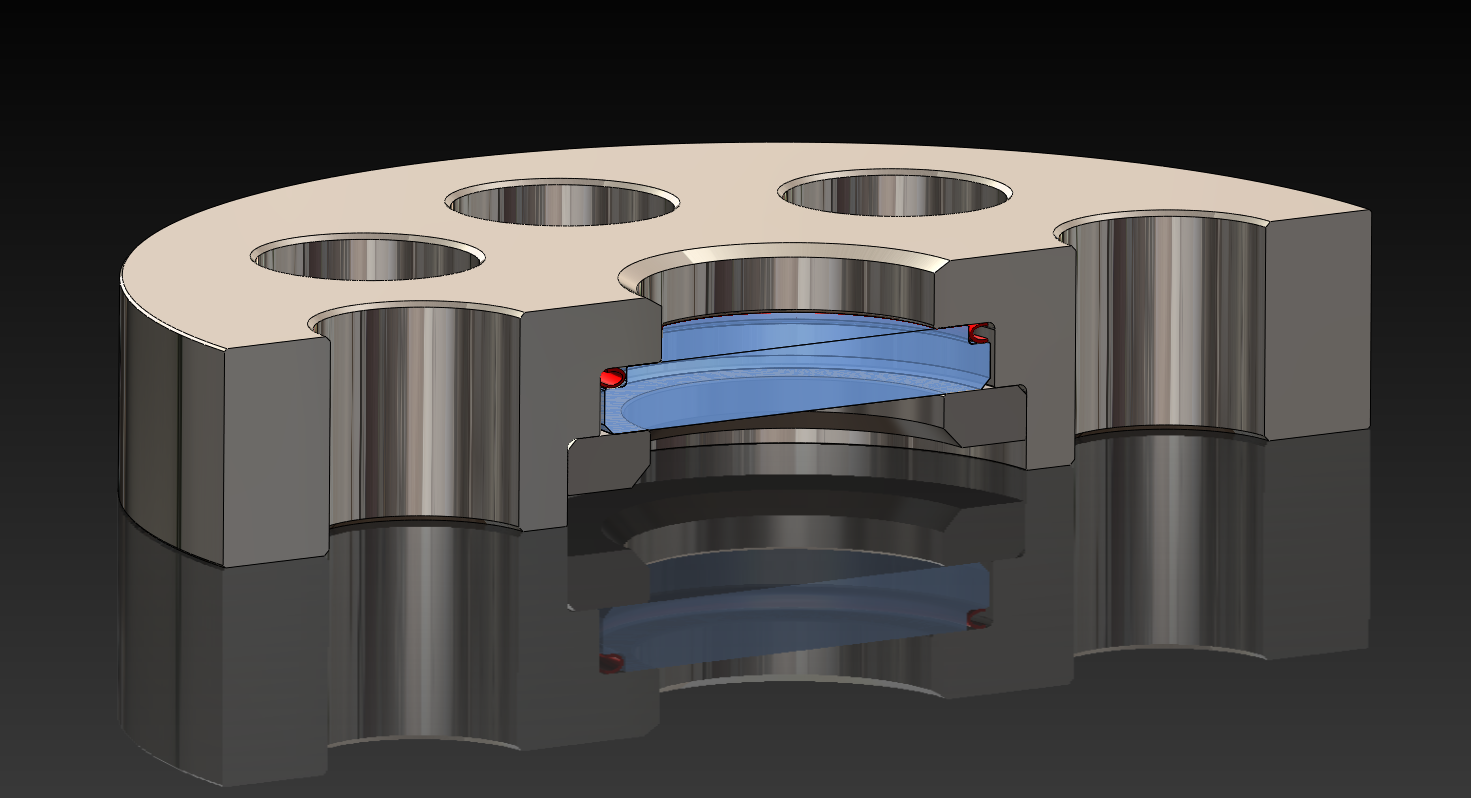Methods to hermeticallty seal glass into a metal housing are brazing, bonding, gasketing and fusing. Each method is explained.
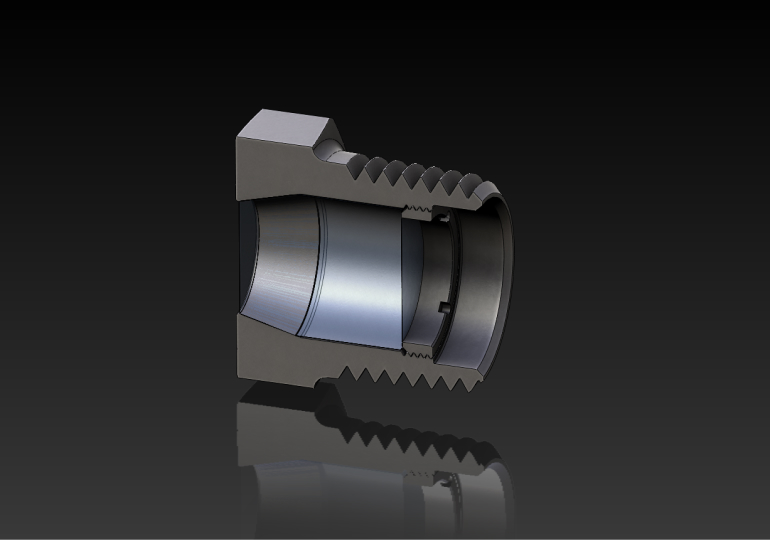
Sealing glass to metal creates a hermetic seal between two dissimilar materials. Choosing the proper sealing method is critical for designing sight glasses and viewports. Some of the main sealing methods are:
We will explore in depth each of these methods, when they should be used for the operating conditions.
The benefit of fused sight glasses are their relatively low cost, very high mechanical strength, and their safety. These types of sight windows are made on a conveyer moving through an oxygen-free tunnel. This is a high volume semi-automated production manufacturing.
During fusing, which takes place inside that tunnel, the glass undergoes several steps. Even before the glass enters the tunnel, the glass is cut to a precise diameter and thickness, placed inside the metal housing on a graphite puck. Both, the glass and the housing sit on the graphite puck. Next, the parts move into the tunnel. The tunnel is purged with Nitrogen gas to make sure there is no Oxygen present. Inside the tunnel the parts are heated by a heating element wrapped around the tunnel. The temperature is above glass melting point. Glass melts onto the graphite puck, and adheres to the metal wall of the housing. At this temperature the metal housing can oxidize, thus the Nitrogen purge. With the glass in liquid state, the metal is at the same temperature expanded radially. This is why it's critical to prepare the glass disk and metal housing internal diameters to have a tight fit before the parts go up in temperature.
In the moment liquid glass touches the metal wall, capillary action takes place at the wall. The glass wicks up the wall creating a lens-effect in the finished product. Next, the parts need to cool down, while continuing to move in the tunnel away from the hot zone. During cooling the glass goes through solidification and annealing phases. At the same time the metal housing cools too, shrinking in diameter.
When the parts cool down to ambient temperature, the housing internal bore is filled with solid glass. And the final diameter is larger than the original diameter the parts started with. In the final product the housing compresses the glass radially, all around with uniform force. The metal now has hoop stress, translating into the glass, making the glass stronger than an unsupported raw glass material without the housing. Example of a commercially available fused sight glass: NPT-Threaded Fused Sight Glass, Borosilicate Window.
Fused sight glasses are naturally strongest of any kind, they are as strong as the housing metal. During an over-pressure failure the glass develops cracks, but still stays in place, does not fly out.
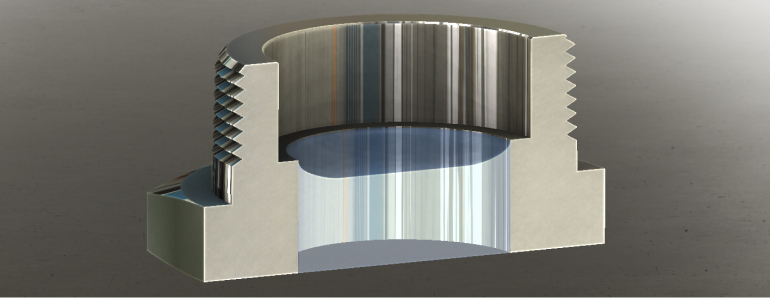
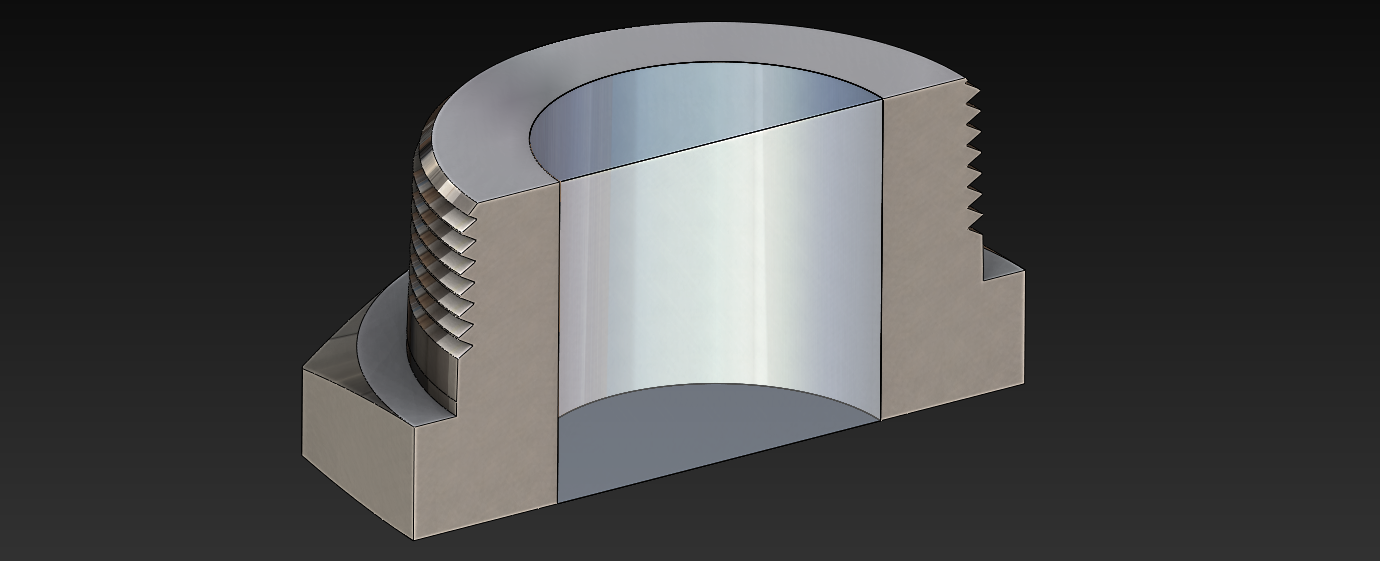
Bonding glass to metal is a popular method for applications requiring low cost alternatives to brazing. Another advantage of organic sealing is relative elasticity. Organic bonding materials can create a stronger seal than brazing because of forgiving CTE mismatch between crystalline window and the metal housing. There are bonding materials that meet the FDA requirements for food applications, 3-A Standards, or high-strength requirements for high pressure applications in downhole cameras. Example of a commercial bonded sight glass: High Pressure Sight Glass, NPT 1 inch Threaded, 316 Stainless, Quartz Window
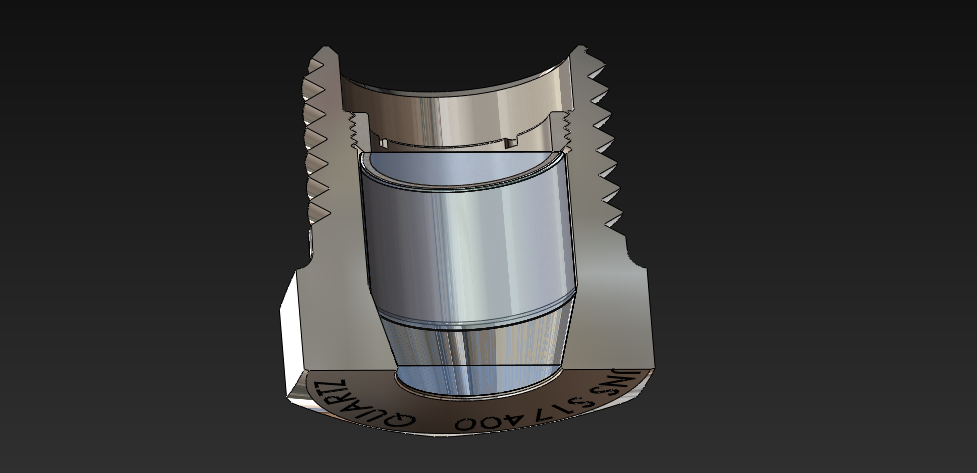
Disadvantage of bonded sight glasses is limitation to temperature. Because of CTE mismatch between the quartz or sapphire and the housing metal, these sight glasses can operate near ambient temperature or slightly above. Where bonded sight glasses are preferred is high pressure applications. The layer of the bonding material between the window and the housing is elastic. This allows for even stress distribution over the entire area where the glass lands onto the housing.
Brazing sapphire or quartz into metal or other crystalline housings is designed for high temperature applications. Also, brazing quartz and sapphire into housings is used for vacuum application where clean He-leak-tight seals are required. For operating temperatures are up to 1000°C quartz or sapphire can be brazed directly into a housing made of alumina, or yttria stabilized zirconia, (YAG-stabilized zirconia). The most common sight glasses with brazed windows have a metal housing, not a crystalline housing. Typically, quartz or sapphire is metallized with Titanium and then subsequently brazed with a silver-based material into a Kovar sleeve. Then the sleeve with the brazed window is welded into a metal housing, typically Inconel 718, which retains its strength up to 700°C. An intermediate Kovar sleeve is required to accommodate a CTE mismatch between the housing and the crystalline windows materials.
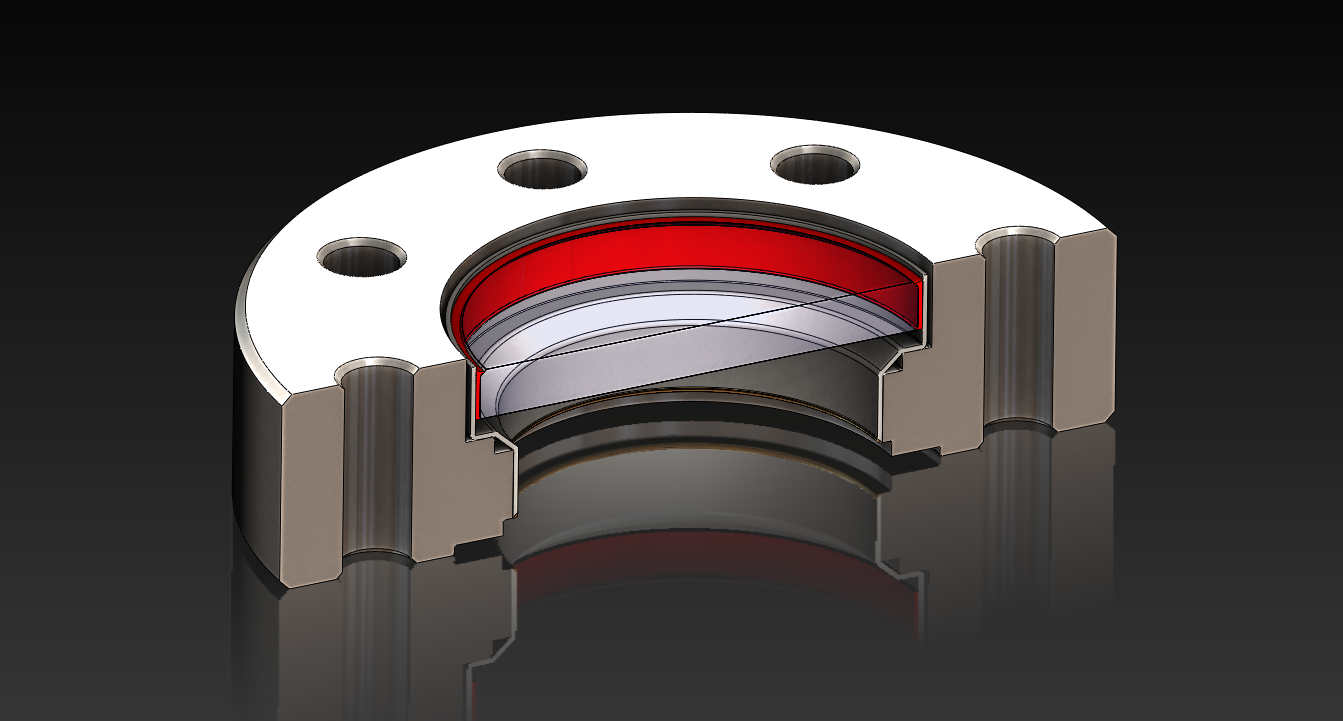
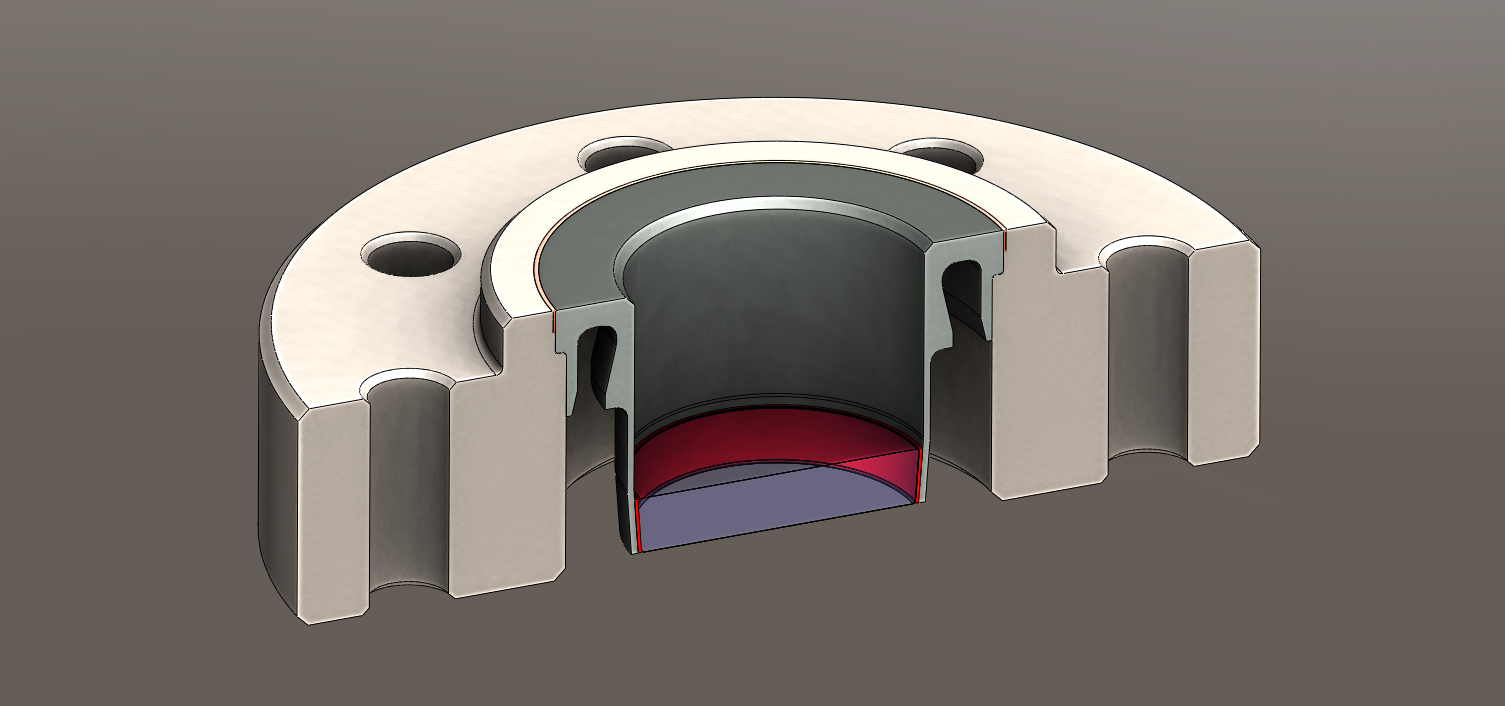
Brazing process of sapphire into Niobium is similar to brazing quartz into Kovar. Because Niobium closely matches CTE of sapphire, the sleeve can be made thicker allowing higher operating pressures of the sight glass assembly.
O-rings sealing glass is a simple method widely used in sight glass designs. O-rings sandwich a glass disk and create a seal. For semiconductor or pharmaceutical applications, Viton or Kalrez materials are commonly selected materials for elastomer O-rings for temperatures up to 327°C (Kalrez) and pressures up to 2,000 psi. In plasma chambers elastomer O-rings cannot be used as these materials eventually harden in presence of strong UV light, and therefore lose their sealing ability. An alternative method will work for UV laser chambers using metal seals or shielding techniques.
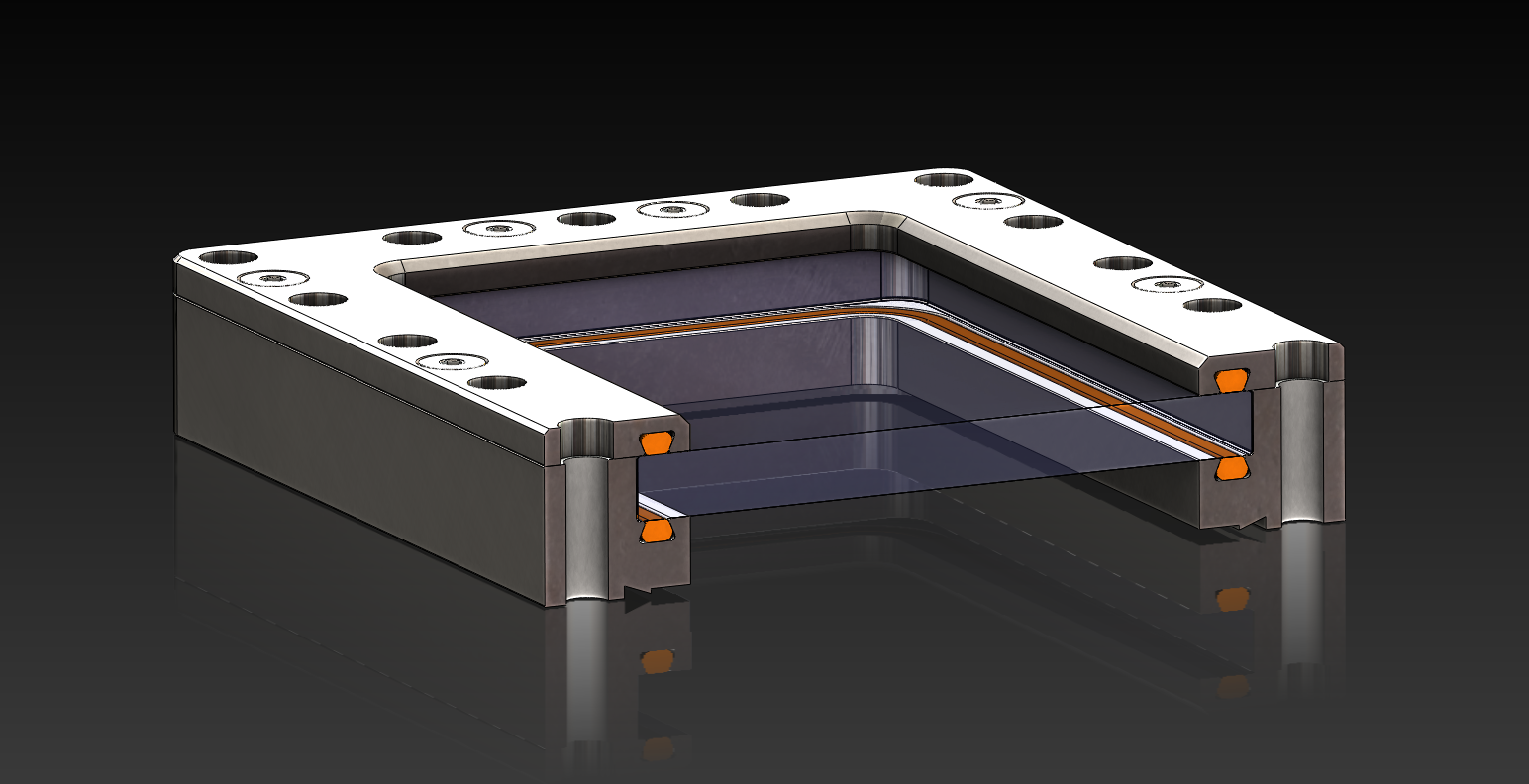
Metal C-seals are made in the shape of the letter "C", therefore the name. C-seals come in an external pressure or internal pressure variety, with the C facing toward the pressure. The "C" facing away from the center of the seal is for external pressure; facing into the center of the seal is for internal pressure. For high temperatures C-seals made of Waspaloy is the preferred choice. C-seals are typically plated for a better seal-ability. The thin layer of that plating material crushes between the seal substrate metal and the landing surface where the seal makes contact with the mating part. For example, the seal makes contact with the metal housing on one side and the window on the other side. Plating will fill microscopic imperfections in surface finishes on both sides, creating a Helium gas leak-tight seal. This works for UHV as well as high pressure. Example of a commercial metal-sealed sight glass: NPT-Threaded Sapphire Sight Glass for H2S Service.
C-seals are a good replacement for elastomer O-rings, where chemical purity is required, pressures are upwards to 100,000 psi (6,890 bar) and temperatures up to 700°C, all at the same time. C-seals have a similar installation procedure as an O-ring. C-seals fit into a groove where hermetic contact is made.
